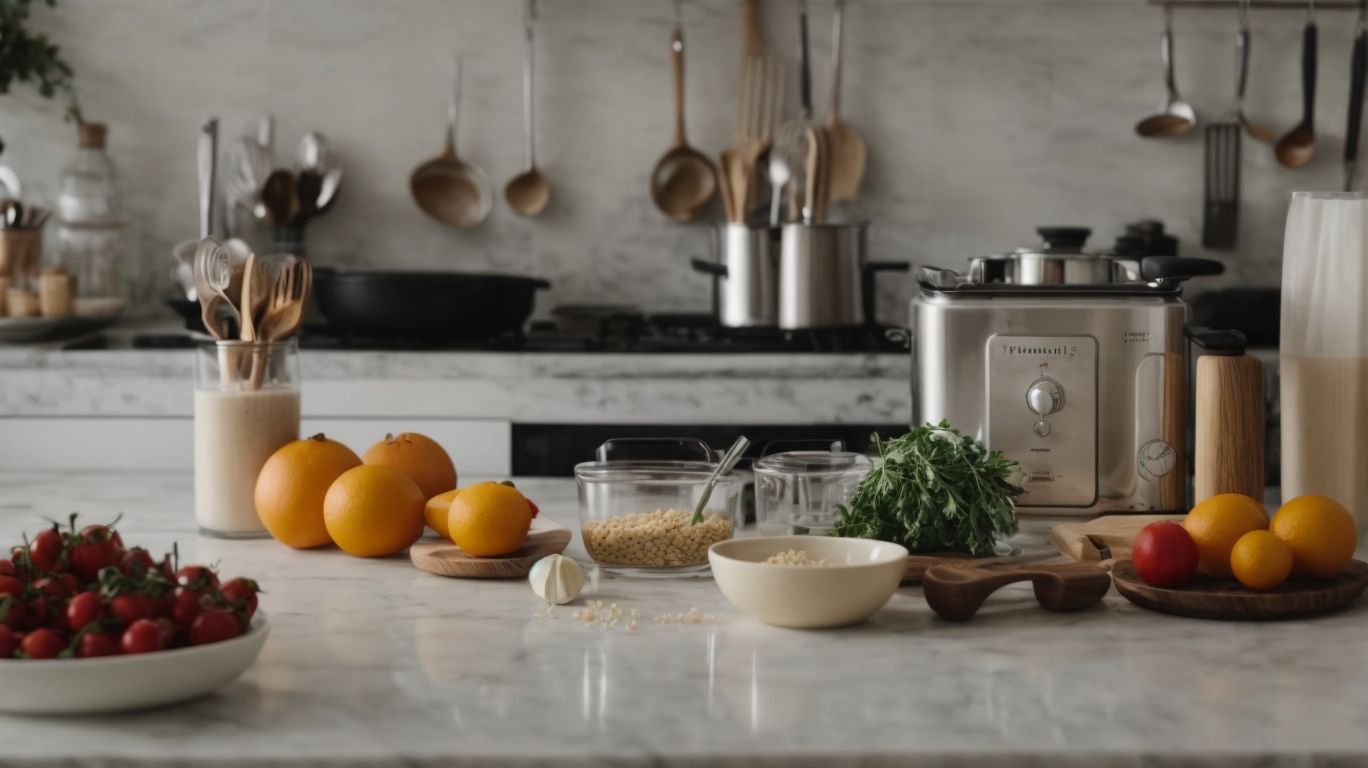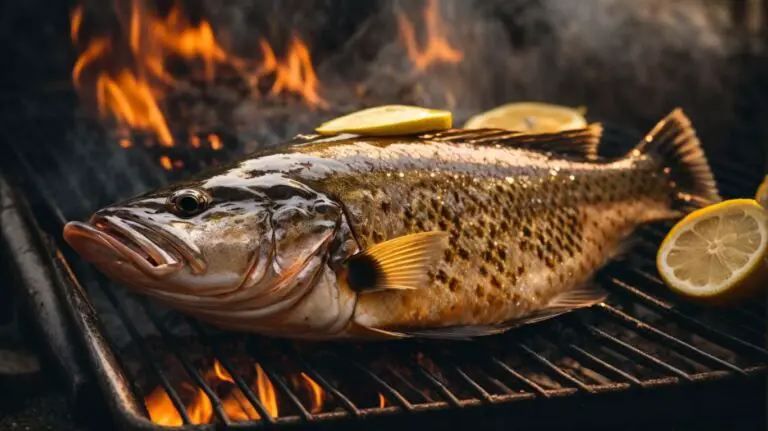How to Cook From What You Have?
Do you ever find yourself staring into your pantry and fridge, wondering what to make with the random ingredients you have on hand?
Assess your pantry and fridge to start cooking from what you have. Create a meal plan based on the ingredients you already have and learn how to maximize flavor with limited resources.
Stay tuned for tips on cooking with what you have, from making soups and stews to whipping up a delicious casserole. Let’s get creative in the kitchen and make the most out of what we have!
Key Takeaways:
Assessing Your Pantry and Fridge
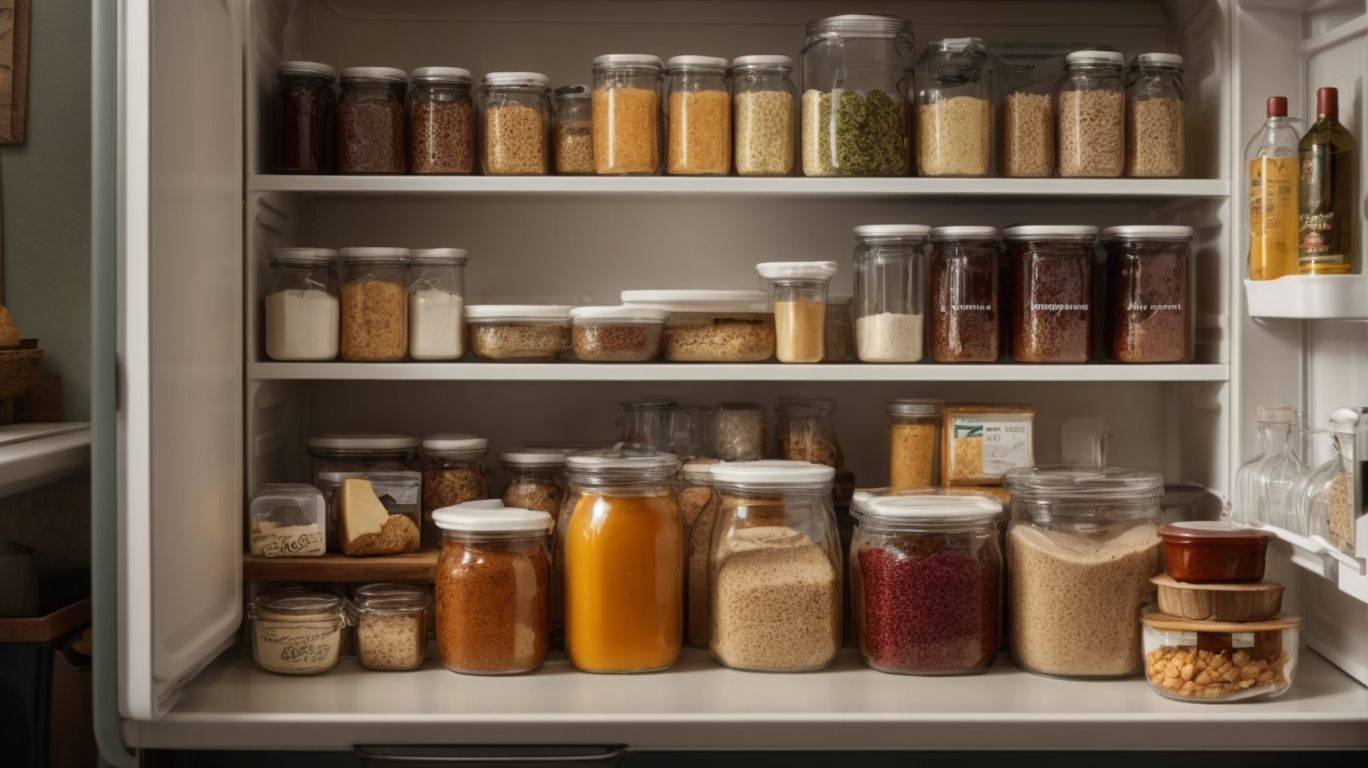
Credits: Poormet.Com – Jason Lewis
Assessing Your Pantry and Fridge is a crucial step in planning your meals effectively. By taking stock of your ingredients, you can ensure you have everything you need for your recipes.
Having a well-stocked pantry is like having a secret weapon in the kitchen. When your shelves are filled with a variety of proteins, vegetables, cheese, and sauces, meal planning becomes a breeze. These key ingredients form the foundation of countless recipes, giving you the flexibility to whip up delicious dishes at a moment’s notice.
Whether you’re craving a hearty pasta dish, a flavorful stir-fry, or a cheesy casserole, having a diverse selection of ingredients at your disposal opens up a world of culinary possibilities.
What Ingredients Do You Have?
When considering what ingredients you have, focus on your pantry staples, proteins, fresh vegetables, various cheeses, and a selection of sauces to enhance flavors.
Proteins play a crucial role in creating a balanced and satisfying meal. You can choose from options like chicken, beef, tofu, or lentils to add that essential element to your dish. Fresh vegetables not only offer vibrant colors but also provide important nutrients. Consider including bell peppers, zucchini, tomatoes, or leafy greens for a nutritious boost. Cheeses bring a rich and creamy texture to your recipes; mozzarella, Parmesan, and feta are versatile choices. Experiment with a diverse range of sauces such as marinara, teriyaki, or pesto to elevate the taste profile of your dishes.
What Ingredients Do You Need?
To determine the ingredients you need, consider the missing components for your desired meals, such as specific proteins, fresh vegetables, cheese varieties, and complementary sauces.
Before starting your culinary journey, planning ahead is vital to ensure you have all the necessary elements for your dishes. It can be disheartening to begin a recipe only to realize you are missing a key ingredient. By creating a shopping list that includes these essential items, like high-quality proteins, seasonal veggies, a selection of different cheeses, and a variety of sauces, you can save time and prevent any last-minute trips to the grocery store.
Creating a Meal Plan
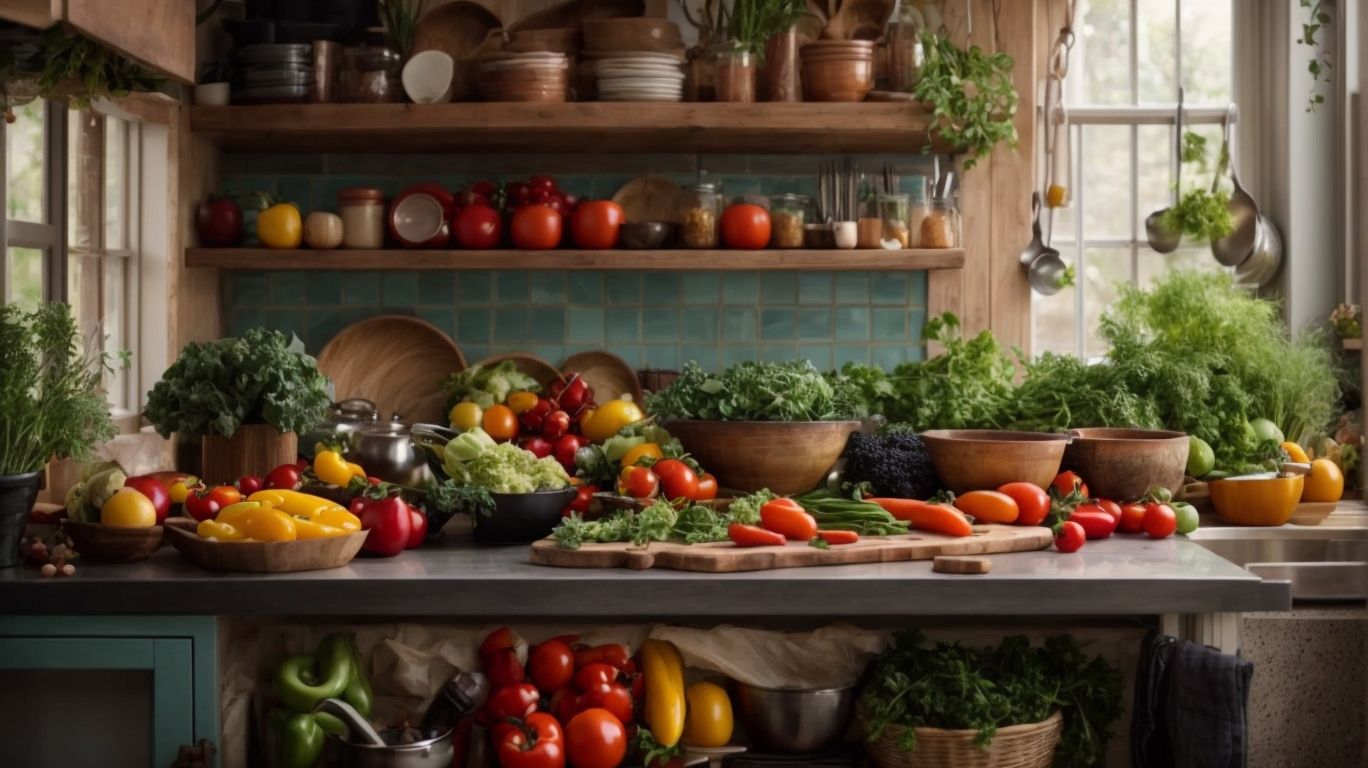
Credits: Poormet.Com – Patrick Gonzalez
Creating a Meal Plan is a strategic approach to organizing your cooking endeavors. By outlining the meals you intend to prepare, you can streamline your cooking process and ensure efficient use of ingredients.
When meal planning, key factors to consider are incorporating a variety of proteins, such as chicken, tofu, or beans, along with a colorful assortment of vegetables to ensure a well-balanced diet. Don’t forget the role of cheeses and sauces in adding flavor and texture to your dishes. Integrating these elements not only enhances the nutritional value of your meals but also brings diversity to your diet, making your culinary experience enjoyable and appetizing.
What Type of Meal Do You Want to Make?
When deciding on the type of meal to make, consider your preferences for protein-based dishes, vegetable-centric recipes, cheesy delights, or saucy creations to satisfy your culinary desires.
Proteins offer a wide range of options such as chicken, beef, fish, tofu, and more, each bringing its unique flavors and nutritional benefits to the plate.
Vegetables, on the other hand, provide color, texture, and essential vitamins that not only enhance the visual appeal but also contribute to a well-balanced diet.
Cheeses add richness and creaminess to dishes, elevating their taste profiles, whether melted over pasta, sprinkled on salads, or as a stand-alone snack.
Sauces act as the flavor booster, with choices like tomato-based marinara, creamy alfredo, tangy BBQ, or spicy sriracha, enhancing the overall dining experience.
What Ingredients Can You Substitute?
Exploring ingredient substitutions can offer creative alternatives for your recipes. Consider replacing proteins, vegetables, cheeses, or sauces with similar options to adapt your dishes.
In terms of proteins, tofu can be a versatile substitute for meat in many dishes, providing a plant-based option packed with protein. For vegetables, try swapping out bell peppers for zucchini or broccoli for a change in texture and taste. Cheese lovers can experiment with swapping feta for goat cheese or cheddar for mozzarella to add a different flavor profile to their dishes. As for sauces, a tomato-based sauce can often be replaced with a creamy Alfredo or pesto for a completely new dish.
How Can You Use Leftovers?
Leftovers can be transformed into delicious meals with a bit of creativity. Repurpose proteins, vegetables, cheeses, or sauces from previous dishes to minimize food waste and create enticing new flavors.
When repurposing leftovers, consider combining different elements to craft unique dishes. Use leftover chicken to make flavorful wraps, toss vegetables into a stir-fry, transform excess cheese into a savory omelette, or turn surplus sauces into marinades for grilling. By reimagining leftovers, you not only reduce waste but also explore new culinary possibilities.
To enhance sustainability, plan meals strategically, portion leftovers efficiently, and freeze extras for future use – creating a cycle that promotes resourcefulness and environmental consciousness.
Maximizing Flavor with Limited Ingredients
Maximizing Flavor with Limited Ingredients requires creativity and resourcefulness in the kitchen. By leveraging spices, herbs, and cooking techniques, you can elevate the taste of your dishes even with minimal ingredients.
When working with few ingredients, flavor enhancement becomes crucial to creating appetizing meals. Experimenting with the combination of spices and herbs can bring depth and richness to your dishes. Roasting spices before using them can intensify their flavors, while fresh herbs can add a burst of freshness to any recipe. Cooking methods such as sautéing, braising, or grilling can transform simple ingredients into flavorful masterpieces.
How to Use Spices and Herbs?
Utilizing spices and herbs can add depth and complexity to your dishes.
Spices and herbs are like magic ingredients that can transform a simple meal into a culinary masterpiece. For example, pairing rosemary with roasted lamb creates a harmonious blend of flavors, while cumin adds an earthy warmth to vegetarian dishes like roasted sweet potatoes.
- Experimentation is key when it comes to creating exciting flavor profiles. Try combining thyme and lemon zest for a refreshing twist on grilled chicken or mix basil and garlic for a classic Italian flavor in pasta dishes.
- Creating your own spice blends can also elevate your dishes. Consider making a vibrant curry powder with turmeric, coriander, and cayenne pepper for a taste of India, or blend paprika, garlic, and oregano for a versatile seasoning for meats, veggies, and even soups.
How to Enhance Flavors with Cooking Techniques?
Mastering cooking techniques can unlock a world of flavors. Explore methods like grilling, roasting, sautéing, or braising to bring out the best taste in your proteins, vegetables, cheeses, and sauces.
Each method introduces a unique depth to the ingredients. Grilling imparts a smoky char, perfect for meats and veggies, enhancing their natural flavors. Roasting caramelizes sugars, creating a sweet, nutty essence in vegetables. Sautéeing quickly cooks delicate items like fish with a tender finish. Braising, on the other hand, tenderizes tough cuts of meat in rich, flavorful sauces.
To optimize taste, adjust temperature and cooking times based on the ingredient. For proteins, achieve a perfect sear to lock in juices. Vegetables benefit from precise roasting to maintain texture and taste. Cheeses can be melted, grated, or smoked to enhance their gooey, sharp, or smoky profiles.
Tips for Cooking with What You Have
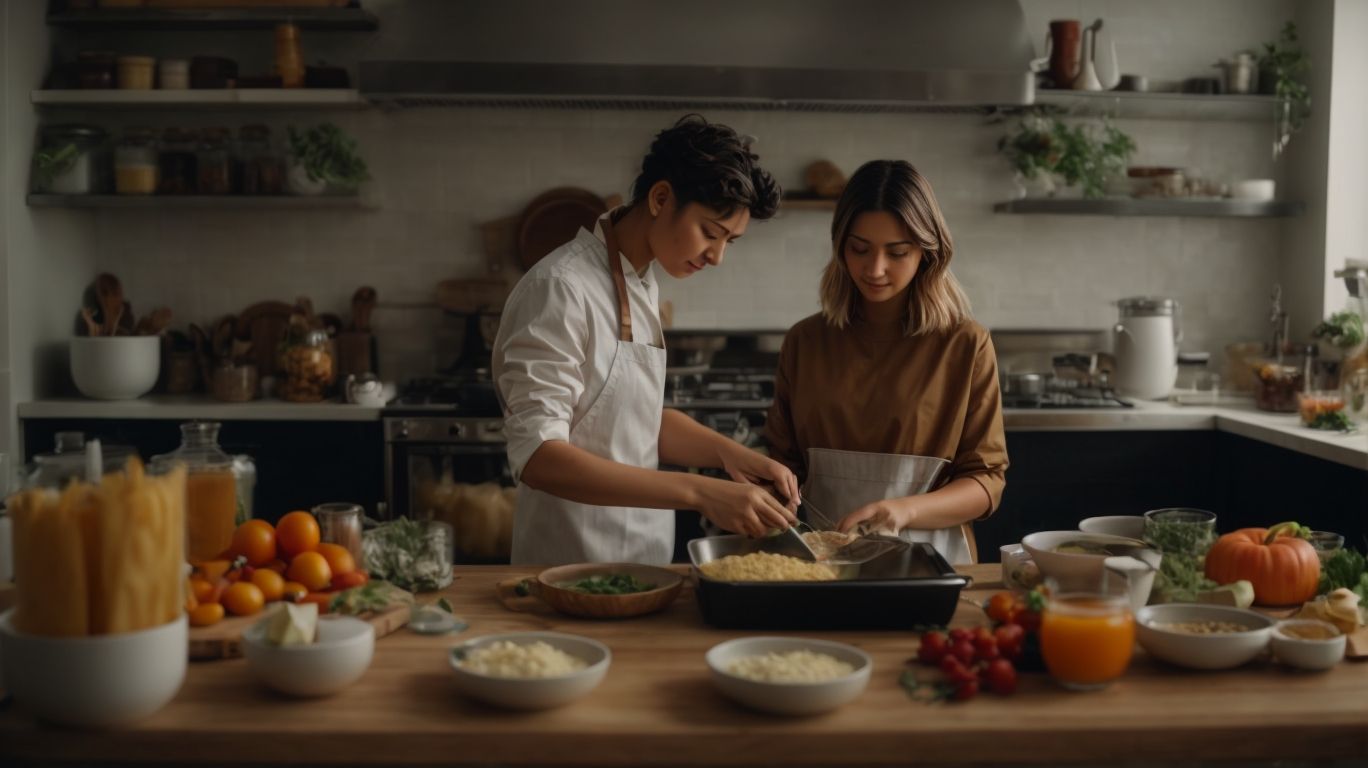
Credits: Poormet.Com – Alan Sanchez
Cooking with What You Have is a creative challenge that can lead to delightful culinary discoveries. By making soups, stews, stir-fries, frittatas, or casseroles with available ingredients, you can craft satisfying meals.
One of the beauties of cooking with existing ingredients is the opportunity to experiment with flavors and textures. For example, a simple vegetable soup can be transformed into a hearty stew with the addition of beans and spices. Leftover rice can be turned into a delicious stir-fry by sautéing it with mixed veggies and a savory sauce.
How to Make a Soup or Stew with Leftovers?
Transforming leftovers into hearty soups or stews is a comforting way to enjoy your meals. Combine proteins, vegetables, cheeses, and sauces with broth or stock for a nourishing and flavorful dish.
For a simple yet delicious soup, start by sautéing onions and garlic in a large pot. Next, add your choice of protein, such as leftover chicken or tofu, and vegetables like carrots, celery, and bell peppers.
Enhance the flavors by adding herbs and spices like thyme, rosemary, and a dash of paprika. Allow the ingredients to simmer in the broth until tender, absorbing all the aromas and tastes of the seasonings.
Finish off your soup or stew with a drizzle of olive oil or a dollop of creamy cheese to add richness and depth. Serve it hot with a side of crusty bread or a sprinkle of fresh herbs for an extra touch of freshness.
How to Make a Stir-fry with Random Ingredients?
Whipping up a stir-fry with random ingredients can yield a quick and delicious meal. Combine proteins, vegetables, cheeses, and sauces in a hot pan for a flavorful stir-fry that showcases your culinary ingenuity.
For a balanced stir-fry, complement a protein like chicken, tofu, or shrimp with an array of colorful veggies such as bell peppers, snow peas, and broccoli.
Experiment with various cheeses like crumbled feta or grated Parmesan to add a creamy and savory element to your stir-fry.
In terms of sauces, opt for classics like soy sauce or oyster sauce for an umami punch, or mix it up with sweet chili or teriyaki for a flavorful twist.
Remember, the key to a successful stir-fry lies in achieving the perfect balance of flavors and textures, so don’t be afraid to get creative in the kitchen!
How to Make a Frittata with Leftover Vegetables?
Crafting a frittata with leftover vegetables is a delightful way to repurpose ingredients. Mix cooked vegetables with eggs, cheeses, and herbs, then bake for a satisfying and versatile dish.
Leftover veggies from last night’s dinner? No problem! Whip up a delicious frittata in no time. Sautee your veggies in a skillet, then pour the egg mixture infused with your favorite cheeses and seasonings over them. The oven does the rest of the work, creating a golden-brown, fluffy masterpiece.
When selecting veggies, think about bell peppers, broccoli, spinach, or even caramelized onions to add depth of flavor. Experiment with sharp cheddar, feta, or even goat cheese for a unique twist, and don’t forget to season with a dash of freshly ground black pepper.
How to Make a Casserole with Pantry Staples?
Creating a casserole with pantry staples is a convenient way to assemble a hearty dish. Combine proteins, starches, vegetables, cheeses, and sauces in a baking dish, then bake for a comforting and flavorful meal.
For a well-balanced casserole, consider using a mixture of lean protein like chicken or beans with a variety of colorful vegetables such as bell peppers, zucchini, and tomatoes. To add richness, incorporate creamy cheeses like mozzarella or cheddar.
When layering ingredients, start with a base of starches such as cooked pasta or rice, then add a protein-vegetable mixture, and top it off with a generous serving of cheese. Season each layer with herbs like basil, oregano, or thyme and don’t forget a sprinkle of salt and pepper for enhanced flavor.
Conclusion and Final Tips
Cooking with what you have can be a rewarding and creative experience. By maximizing flavors, utilizing leftovers, and exploring ingredient substitutions, you can transform ordinary meals into culinary delights.
Resourcefulness in the kitchen not only saves time and money but also enhances your cooking skills. It allows you to experiment with different tastes and textures to create unique dishes. Remember, even with limited ingredients, you can add depth to your meals by incorporating herbs, spices, and simple cooking techniques.
For a burst of flavor, consider using citrus zest as a finishing touch or making your own seasoning blends with pantry staples like garlic powder, onion powder, and paprika. Don’t be afraid to mix sweet and savory elements to surprise your taste buds and those of your family or guests.
Frequently Asked Questions
How to Cook From What You Have?
What does it mean to cook from what you have?
Cooking from what you have means using ingredients that are already in your pantry or fridge instead of following a specific recipe with a set list of ingredients.
Why should I cook from what I have?
What are the benefits of cooking from what you have?
Cooking from what you have not only helps reduce food waste, but it also allows for more creativity in the kitchen and can save you time and money on grocery shopping.
How can I make a meal from random ingredients?
I have a few random ingredients in my pantry and fridge, how can I make a meal out of them?
Look for recipes that use similar ingredients or use a search engine to find recipes that include the ingredients you have on hand. You can also get creative and experiment with your own flavor combinations.
What are some essential pantry staples for cooking from what you have?
What are some must-have pantry items for cooking from what you have?
Some essential pantry staples for cooking from what you have include canned beans, dried pasta, canned tomatoes, rice, and spices. These ingredients can be used as a base for many different meals.
How can I make a variety of meals with limited ingredients?
I have a limited amount of ingredients, how can I make different meals with them?
Get creative with your cooking and try combining ingredients in different ways. For example, you can use canned beans to make a salad, soup, or a dip. You can also use the same base ingredients but switch up the spices and seasonings for different flavors.
What are some easy meals I can make from what I have?
I don’t have many ingredients, what are some simple meals I can make from what I have?
Some easy meals you can make from what you have include pasta dishes, stir-fries, omelets, and grain bowls. These meals allow for flexibility in ingredients and can be customized to your liking.

